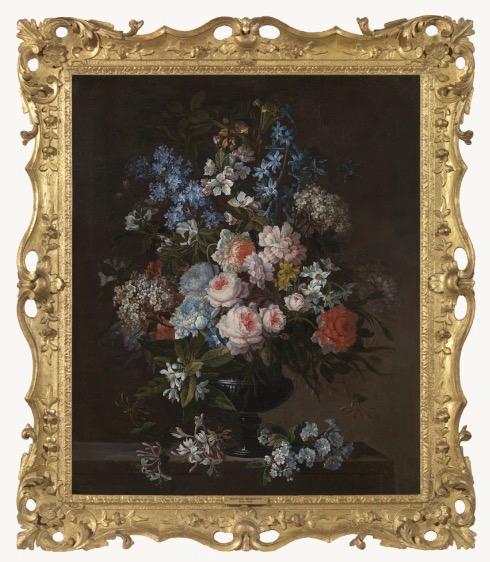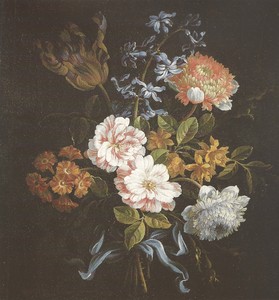Antoine Monnoyer
Roses, carnations, honeysuckle, apple blossom and other flowers in a glass vase on a stone ledge
Oil on canvas : 76,3 X 63,8 cm
Signed and dated “Baptiste 1714” lower right
Sold at Bonhams London, 9/07/14
For 17.500 £ = 22.032 €
This is a comparative item

Painting for Sale
Comparative paintings
Click photos for more details


